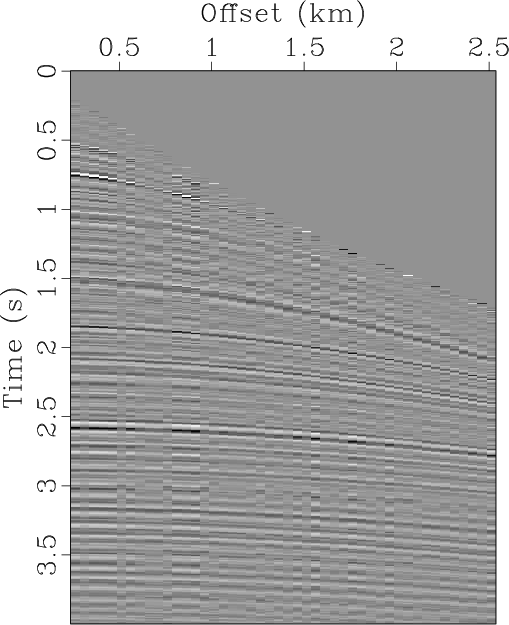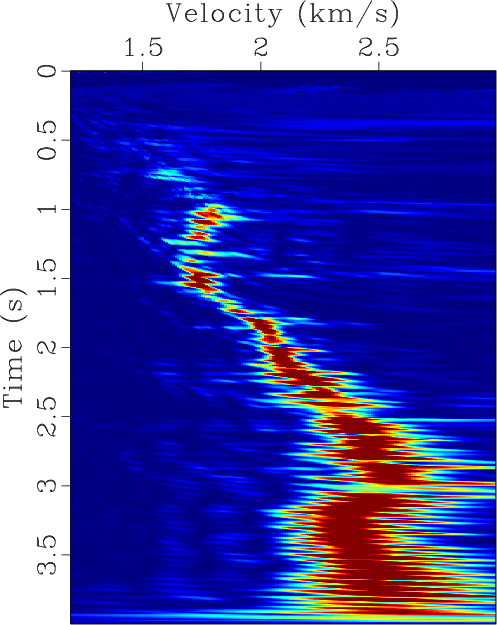|
|
|
|
Multiple reflections noise attenuation using adaptive randomized-order empirical mode decomposition |
Next: Conclusions Up: Multiple reflections noise attenuation Previous: Randomized-order EMD
We zoom a part from the data and show detailed comparison of demultiple performance using median filter (MF) based and EMD based approaches (Fig. 4). Fig. 4a shows the noisy zoomed CMP gather. Fig. 2b shows the data after randomization. Fig. 4c is the demultipled data using MF. Fig. 4d shows its corresponding noise. Fig. 4e shows the demultipled data using EMD and Fig. 4f shows the corresponding noise. It is obvious that the EMD based approach can make the flattened primary reflections more coherent while the MF based approach will cause some abnormal features, since the MF based approach is more based on the spike-like property of noise. While the noise is just incoherent but not spiky, MF based approach cannot obtain a successful performance.
The second example is a field data example, which is shown in Fig. 5a. There exists strong internal multiple reflections in this CMP gather. Figs. 5c and 5e show the results using MF and EMD based approaches (here we omit the flattening, randomization, processes and just show the final performances). It is clear that the proposed approach can obtain more coherent primary reflections. The bottom row of Fig. 5 shows the velocity spectra that corresponds to the top row of Fig. 5. The strong multiple reflections energy can be revealed from Fig. 5b. Figs. 5d and 5f confirm that significant multiple reflections energy has been removed while the EMD based approach obtain an obviously better preservation of the primary energy, since the velocity spectrum corresponding EMD has more focused and stronger velocity peaks. The removed multiple reflections using MF and EMD approaches are shown in Figs. 6a and 6b, respectively.


|
|---|
|
hask,nmo
Figure 2. (a) Original synthetic example. (b) Flattened CMP gather by picking the primary reflections related velocity peaks. |
|
|






|
|---|
|
h-ncmp,h-rand,h-back,h-dif,h-nrand-emd-back,h-emd-dif
Figure 3. (a) CMP gather. (b) Trace randomization result. (c) Demultipled using the PEF method. (d) Noise corresponding to (c). (e) Demultipled using the proposed method. (f) Noise corresponding to (e). |
|
|






|
|---|
|
h-ncmp,h-rand,h-back,h-dif,h-nrand-emd-back,h-emd-dif
Figure 4. (a) CMP gather. (b) Trace randomization result. (c) Demultipled using the PEF method. (d) Noise corresponding to (c). (e) Demultipled using the proposed method. (f) Noise corresponding to (e). |
|
|






|
|---|
|
cmp0,vscan,demul-mf,vscan-mf,demul-emd,vscan-emd
Figure 5. (a) CMP gather. (b) Velocity spectrum of (a). (c) Demultipled using MF. (d) Velocity spectrum of (c). (e) Demultipled using EMD. (f) Velocity spectrum of (e). |
|
|


|
|---|
|
dif-mf,dif-emd
Figure 6. (a) Removed multiple reflections using MF. (b) Removed multiple reflections using EMD. |
|
|